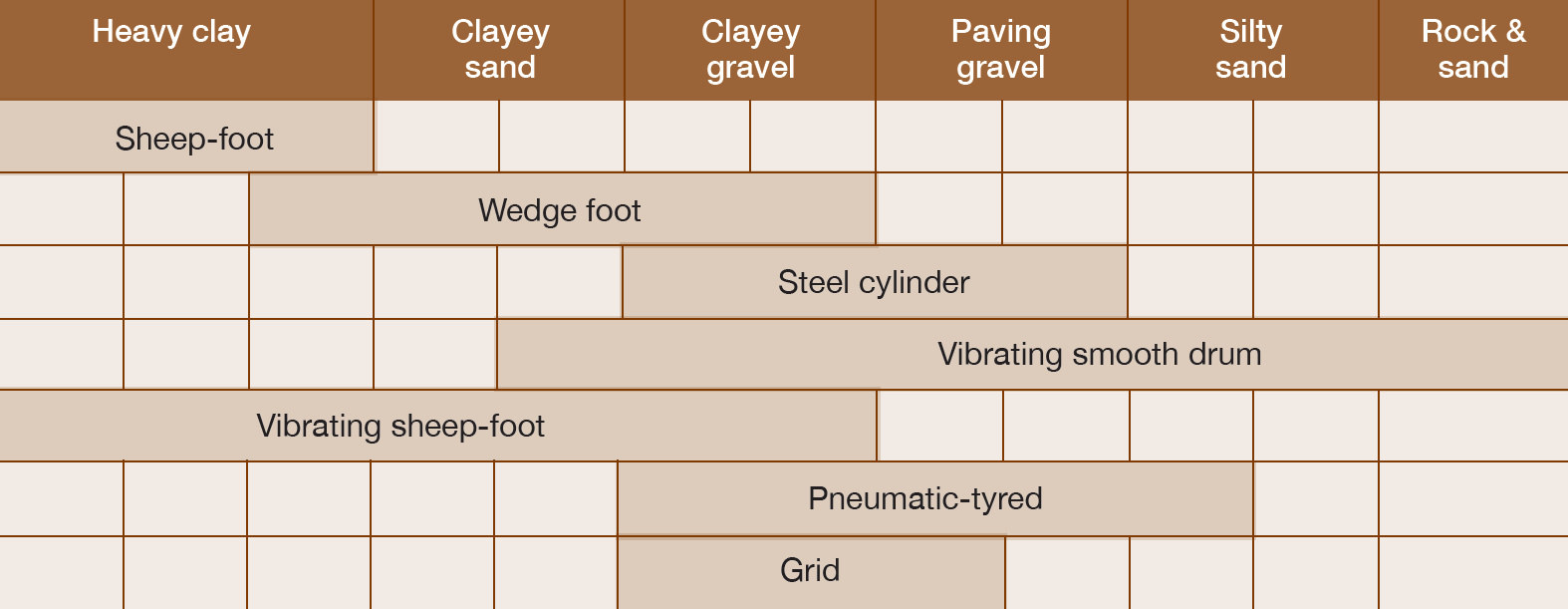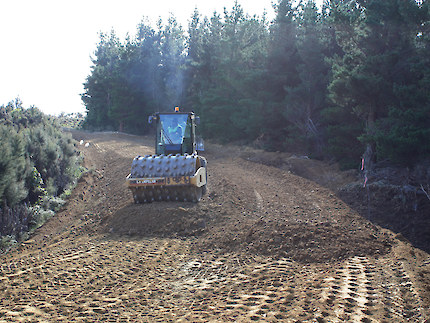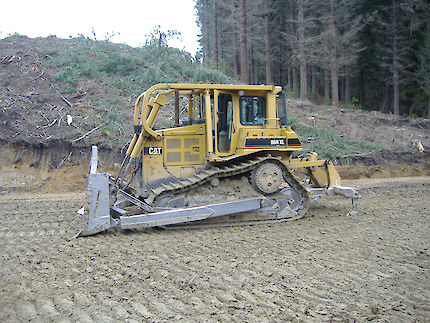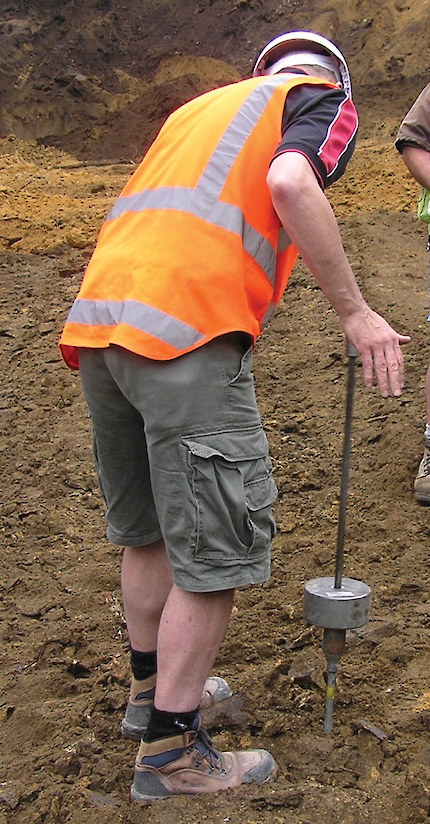Compaction is an important task in building a road and landing. How you compact depends on what material you are working in. All compaction needs moisture, but not too much or too little.
Why compact?
- Compaction strengthens the fill and the road. It reduces the risk of fill movement or settlement on steep or unstable slopes
- It reduces the amount of road metal needed as road subgrade is stronger
- It helps protect or ‘seal off’ earthworks from water penetration
- It can reduce repair and maintenance costs
Which compactor for the job?

Step 1: Is the soil a clay – try to roll a worm!
- Moisten the soil and try and roll it into a thin worm 3-5 mm thick
- If the soil feels sticky and turns into a snake without cracking, you have clay
- A clay with sand – you will feel the sand particles

Step 2: Is the soil silty – try the tap test!
- Roll a wet soil sample into a 20 mm ball and flatten it
- Now tap the hand to see if water arises. If so, it is a silt
Table 5: Compactor and soil type

Step 3: Look at the table above
- Sheep or wedge foot rollers are the most useful in formation
- Vibrating drum rollers (smooth) are useful for sealing aggregate
- Heavy compactors work better
- Loaded metal truck wheels compact
How much moisture is enough?
Step 1: Do the squeeze test
- Squeeze some material in your hand, then take off the pressure
- If it just holds together, and the content doesn’t stick to your fingers, the moisture is about right
- More granular materials are less likely to hold too much water
Step 2: Plan your next steps
Table 6: Earthworks compaction

How thick can a layer be compacted?
Limit layer thickness, so compaction goes the full depth of each layer.
Table 7: Earthworks compaction


- The correct compactor − a vibrating sheep-foot − has been used
- The right moisture content ensured good compaction
- Compaction had been done in the right layer thickness for the material
- The material has not been over-compacted

- Dozers and excavators are not compactors
- Wide tracked machines apply low ground pressure even though they are heavy
- Track rolling only gives minor compaction, however, it tightens the fill by breaking down larger material

- The metal is being compacted with the correct compactor − a vibrating steel drum
- The aggregate is compacted in layers less than 150 mm

- Excessive vibrating rolling has brought moisture to the surface and hasn’t improved the result
- Do not try to compact wet or very dry materials, as these may become liquid

- Penetrometers are useful for identifying subgrade weaknesses
- They also show that the subgrade has met compaction standards

- Lack of compaction, or too much moisture in the fill, led to this major road failure
- Water will enter the tension cracks and make the fill even less stable